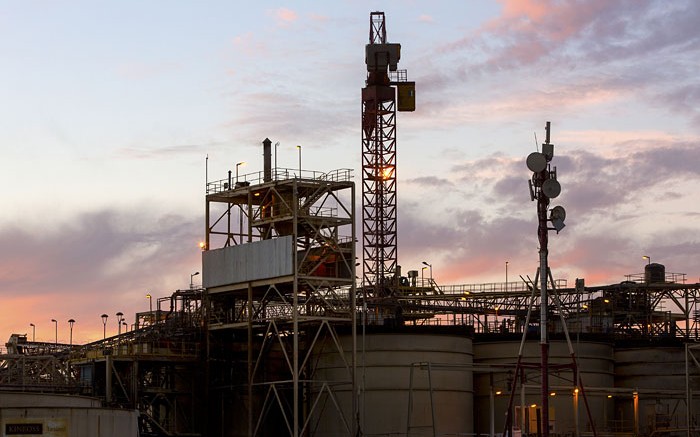With gold falling to a four-year low of US$1,171.60 per oz. on the afternoon of Halloween, many gold miners saw their shares slip to 52-week lows.
Kinross Gold (TSX: K; NYSE: KGC) was among them, with its Toronto-listed shares closing down 12% on the day to $2.44, below its previous 52-week low of $2.65 per share on Oct. 30. In New York the company’s shares ended at US$2.15, down 13.7%, but still above their previous 52-week low of US$2.07.
In Kinross’ case, it didn’t help that Macquarie Bank reduced its 12-month target price on the company earlier in the week from $6.50 to $3.75 per share, describing the miner as “clearly out of favour.”
Analysts Ron Stewart and Mohamed Abo Daff pointed out in a research note that not only had the market “paid little attention” to the company selling the Fruta del Norte gold project in Ecuador to Fortress Minerals (TSXV: FST.H; US-OTC: FTMNF) for US$240 million on Oct. 21, but that “the political situation in Russia, together with the continued uncertainty over the future of Tasiast, and the aging asset base in the Americas,” had given them pause.
“Aside from the company’s late 2013 success in commissioning the satellite Dvoinoye mine in Russia, there has been little to cheer about, where the company’s development pipeline is concerned,” they said. “The much-anticipated Tasiast feasibility study was released as promised in the first quarter of 2014, and despite being heralded as a potential cornerstone asset of the future, it continues to be questionable at current gold prices. A prefeasibility study is being completed on the potential restart of the La Coipa mine, but judging from the current resources, we expect the impact on the business will be modest, at best.”
The analysts also conclude that in their view, Kinross would develop Tasiast “in order to maintain its gold production profile.”
“In the event that the gold price remains in the US$1,200 per oz. range, we submit the company could either defer the development decision for another year or so, or alternatively look to bring in a joint-venture partner to help fund the US$1.6-billion capital investment. But regardless, without Tasiast in the asset mix, Kinross’ future looks challenged.”
When asked for comment, Andrea Mandel-Campbell, director of Kinross’ corporate communications, said the gold miner shared Macquarie’s view that its stock was undervalued on many metrics relative to its peers, but that given its production size, competitive costs, strong balance sheet and growth prospects, the mining company offers a compelling buying opportunity.
She noted that while Macquarie and the market at large are discounting the company’s Russian operations due to perceived political risk, “the fact of the matter is that our operations remain unaffected, and it continues to be business as usual for Kinross in Russia.” Mandel-Campbell pointed out that Kinross has not yet made a decision on its Tasiast project — nor will it, until 2015.
Kinross picked up the Tasiast gold project in Mauritania, along with the Chirano gold mine in Ghana, in its controversial US$7.1-billion acquisition of Red Back Mining in 2011.
On March 31, Kinross released a feasibility study for an expansion at Tasiast that would replace the 8,000-tonne-per-day mill with a 38,000-tonne-per-day mill. The new mill would produce 848,000 oz. per year for the first five years (2018–22) and produce a cumulative 9 million oz. gold over its mine life to 2029. The study forecast total cash costs would average US$501 per oz. for the first five years and US$616 per oz. over the mine life, with all-in costs of US$792 per oz. and US$878 per oz.
Using a US$1,350 per oz. gold price, the study forecast initial capital expenditure of US$1.6 billion, down from the prefeasibility estimate of US$2.7 billion in April 2013. At the time the feasibility results were released, CEO Paul Rollinson said an expanded Tasiast would not only be the company’s largest producing mine, but could also be among the company’s lowest-cost operations and a “cornerstone of our future portfolio.” Rollinson was appointed CEO in late 2012.
In the three months ended June 30, Kinross produced 679,831 equivalent oz. gold compared with 655,381 oz. in the second quarter of 2013, and trimmed all-in sustaining costs to US$976 per equivalent oz. sold, from US$1,038 per oz. gold.


Be the first to comment on "Macquarie Research cuts Kinross target price"